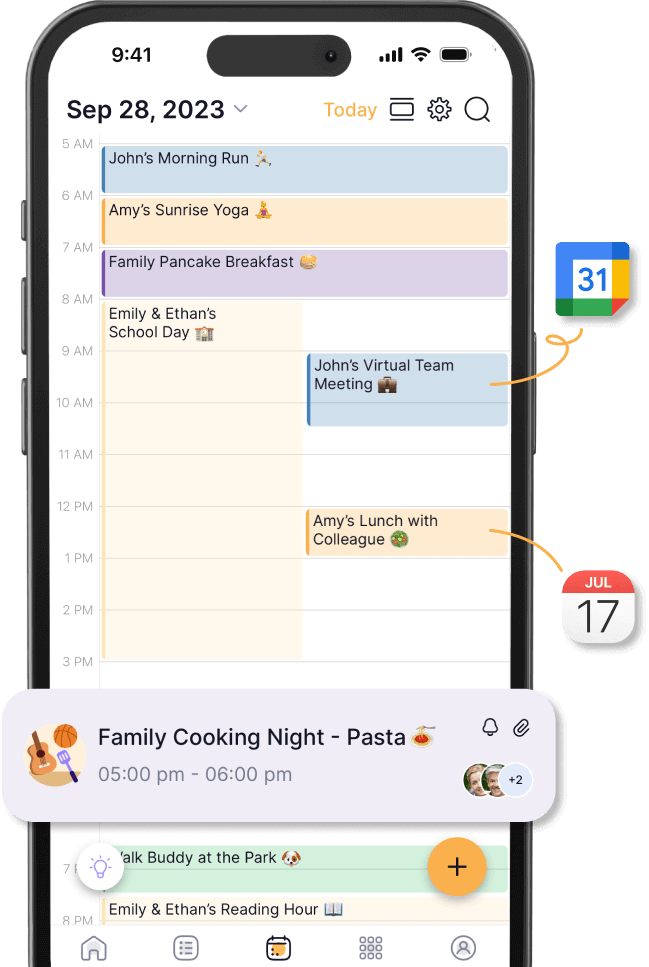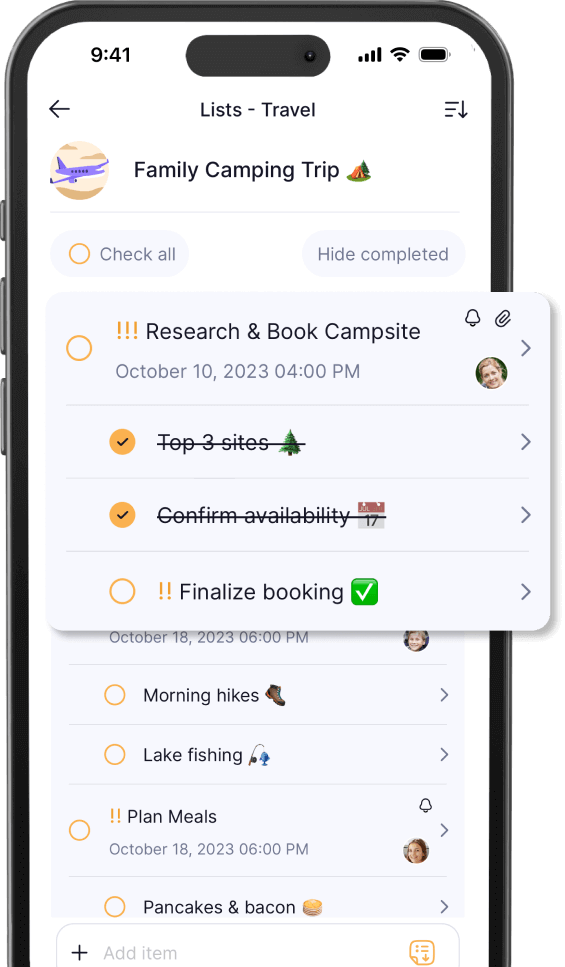10 Essential Strategies for Streamlining Your Family Life
Have you ever missed an important family event because it slipped your mind amidst the hustle and bustle of daily life? Or found yourself unprepared during an emergency, wishing that vital information was more accessible? You’re not alone. In our fast-paced world, the essential tasks of organizing and collaborating within a family often fall by the wayside. This article outlines ten crucial strategies to not only keep your family’s busy schedule in check but also ensure you’re prepared for unexpected moments, fostering a sense of security and harmony in your household.
1. Family Calendar: The Heartbeat of Family Organization
A well-maintained family calendar is essential, serving as the central hub where all activities and commitments converge. From soccer practices to parent-teacher meetings, having a shared calendar ensures everyone is on the same page, and no important event is missed.
Actionable Tip: Start a monthly planning ritual where the family gathers to discuss and input their upcoming engagements. This not only keeps the calendar up-to-date but also encourages active participation and mutual respect for each other’s schedules.

2. Meal Planning: Simplifying Life and Choosing Health
Meal planning goes beyond just organizing the week ahead; it’s about making life simpler and embracing healthier eating habits as a family. It streamlines shopping, saves time, and ensures that meals meet everyone’s taste and nutritional needs.
Example: Consider a family sitting down together on Sunday evenings to plan the week’s meals. This activity not only makes grocery shopping more efficient but also turns mealtime into an enriching family moment, where lessons in nutrition and cooking are shared in a fun and engaging way. Through meal planning, families can enjoy the double benefit of easier days and healthier choices.
3. Emergency Information: Safety First
In emergencies, every second counts. Having a designated spot for emergency contacts, medical information, and insurance details can be lifesaving. Ensuring that every family member knows where this vital information is kept and how to use it is crucial.
Real-Life Scenario: When the Jones family faced a medical emergency, their family emergency plan ensured their teenage son knew exactly where to find the necessary information to get help quickly.

4. Household Chores: Fostering Teamwork and Shared Responsibility
Distributing household chores is key to fostering a sense of responsibility and teamwork among family members. It instills a feeling of contribution and partnership, crucial in any family dynamic. A shared approach to chores also helps prevent feelings of resentment and burnout, ensuring that everyone feels valued and involved in maintaining the home.
Flexibility Highlight: Adapting chores based on family members’ schedules and abilities is important, emphasizing that while having a plan is crucial, the ability to be flexible and supportive of each other is equally important.
5. Family Goals and Achievements: Celebrating Togetherness
Setting family goals, such as planning a vacation or saving for a new home, reinforces the concept of teamwork. Tracking and celebrating these achievements strengthens family bonds and instills a sense of shared purpose.
Practical Tip: Create a “goal jar” or a shared goal list where each family member can contribute ideas for new goals. Regularly review these suggestions during family meetings to decide which ones to pursue next. This approach not only democratizes the goal-setting process but also makes the achievement of these goals a collective victory.
6. Health and Fitness Records: A Pillar of Family Well-being
Maintaining health records and fitness goals for each family member is essential for promoting a healthy lifestyle. Keeping track of regular check-ups, vaccinations, and fitness activities helps ensure the overall well-being of the family.
Tip for Getting Started: Coordinate annual health check-ups for all family members around the same time to make sure no appointment is overlooked. This not only simplifies scheduling but also reinforces the commitment to family health as a unified goal.
7. Shared Hobbies and Interests: Strengthening Bonds Beyond the Routine
Exploring shared hobbies offers a way to deepen family connections beyond daily routines. From nature hikes to gardening or cooking together, these activities enrich family time and allow for individual expression within a supportive group setting.
Practical Tip: Start with a family brainstorming session to discover activities everyone is excited about. Schedule regular sessions to delve into these interests, making sure to rotate choices to reflect everyone’s preferences. This approach not only broadens experiences but also highlights the joy of togetherness and mutual respect.

8. Important Documents: Centralizing Critical Information
Securing important documents such as birth certificates, passports, and legal papers in a single, accessible location is crucial. This organization not only saves time but also reduces stress during urgent situations when these documents are needed.
Actionable Tip: Digitize your important documents and store them in a secure cloud service. This ensures easy access at critical times and provides an added layer of security against loss or damage.
9. Family Memories: Cherishing Shared Experiences
Collecting and organizing family photos and letters is about more than just keeping them safe; it’s about building a legacy of memories that can be enjoyed for generations. These memories are a way to keep family stories and experiences alive, sharing them from one generation to the next.
Challenge and Solution: Finding the time for this can be tough. A good way to manage it is by setting up a “memory day” every few months. Spend this day together as a family digitizing and organizing your memories. This approach not only helps tackle the task but also turns it into a special activity where you make new memories while revisiting and preserving the old.

10. Daily Communication: The Key to Understanding
Encouraging daily check-ins fosters open communication within the family. Understanding each other’s daily experiences, challenges, and joys strengthens the emotional connection within the family.
Example: The Lee family has established a “how was your day?” dinner ritual. This practice allows each member to share and reflect on their day, promoting a deeper understanding and support among them.
Embracing Technology for Family Organization
Incorporating technology in family organization can be a game changer. An app like Sortifyd is designed with families in mind. It offers a streamlined platform to manage various aspects of family life, from calendars to storing important information and memories. While technology is not a panacea, it is an invaluable ally in promoting family collaboration and harmony.
Conclusion
Organizing family life goes beyond mere schedules and chores. It’s about creating a foundation of cooperation, understanding, and mutual support. By focusing on these ten key areas, families can foster a more harmonious, organized, and fulfilling life together.
Embark on your journey towards a more organized and collaborative family life. Consider tools like Sortifyd to enhance this experience, making it both enjoyable and effective.
Comments are closed.






